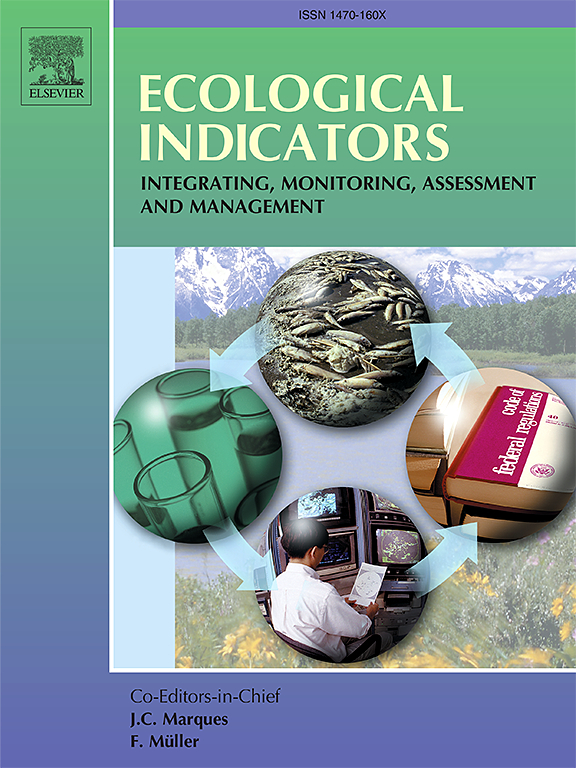Productivity and tolerance reveal the shift from competition to facilitation among multiple species under multiple stressors
IF 7
2区 环境科学与生态学
Q1 ENVIRONMENTAL SCIENCES
引用次数: 0
Abstract
Interspecific competition and facilitation play essential roles in community structure and have been widely demonstrated between pairwise species. However, little is known about how interspecific interactions among multiple species shift between competition and facilitation under multiple stressors. Here, we developed a plant community dynamic model to investigate how the biomass of three dominant species (Ceratophyllum demersum, Hydrocharis dubia, and Phragmites australis) shifts across total nitrogen (TN) and water depth (WD) gradients, further clarifying the interspecific interactions among these three species compared to those observed between pairwise species. The results were as follows: (1) interspecific competition shifted to facilitation with increasing TN stress, mainly affecting the stress–intolerant species; (2) this shift under TN and WD stressors occurred at lower TN levels than those observed under a single TN stress, and the shift occurred at higher TN levels among the three species compared to those observed between pairwise species. We suggest that: (1) the shift from interspecific competition to facilitation primarily relies on the strong positive feedback effect that enhances low productivity under high stress; (2) the threshold for this shift is influenced by the acceleration or deceleration of productivity under high stress due to multiple stressors and species, respectively. Our study proposes adaptation mechanisms from the perspective of interspecific interactions among multiple species, which can be explained by the productivity and tolerance of these species under multiple environmental stressors. This research provides novel ideas and methodologies for gaining insight on the co-existence of multiple species and the stability of plant community systems.

求助全文
约1分钟内获得全文
求助全文
来源期刊

Ecological Indicators
环境科学-环境科学
CiteScore
11.80
自引率
8.70%
发文量
1163
审稿时长
78 days
期刊介绍:
The ultimate aim of Ecological Indicators is to integrate the monitoring and assessment of ecological and environmental indicators with management practices. The journal provides a forum for the discussion of the applied scientific development and review of traditional indicator approaches as well as for theoretical, modelling and quantitative applications such as index development. Research into the following areas will be published.
• All aspects of ecological and environmental indicators and indices.
• New indicators, and new approaches and methods for indicator development, testing and use.
• Development and modelling of indices, e.g. application of indicator suites across multiple scales and resources.
• Analysis and research of resource, system- and scale-specific indicators.
• Methods for integration of social and other valuation metrics for the production of scientifically rigorous and politically-relevant assessments using indicator-based monitoring and assessment programs.
• How research indicators can be transformed into direct application for management purposes.
• Broader assessment objectives and methods, e.g. biodiversity, biological integrity, and sustainability, through the use of indicators.
• Resource-specific indicators such as landscape, agroecosystems, forests, wetlands, etc.
 求助内容:
求助内容: 应助结果提醒方式:
应助结果提醒方式:


